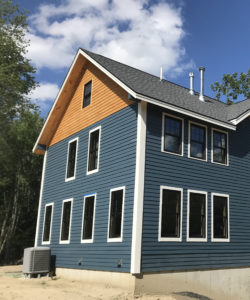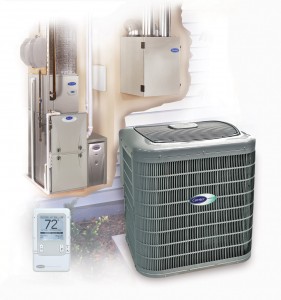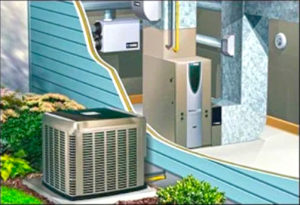 What’s the biggest new trend in home construction? It’s “home electrification,” and it’s going to be the next big thing in building a home. As local and state governments move toward new clean energy goals, this trend of home electrification will increase. How do log home owners get ahead of the curve?
What’s the biggest new trend in home construction? It’s “home electrification,” and it’s going to be the next big thing in building a home. As local and state governments move toward new clean energy goals, this trend of home electrification will increase. How do log home owners get ahead of the curve?
What Does Home Electrification Mean for My Home?
Whether you’re planning a large or modest-sized Katahdin Cedar Log Home, electrification reduces your consumption of fossil fuels like propane, heating oil and natural gas. This electrification of your log home can cut your carbon foot print and emissions. Plus, you’ll save lots of money, because you’ll be relying on the highest efficiency heating and cooling systems, including all-electric heat pumps. Hybrid heat pumps are the smart way for many in colder climates to bridge the comfort requirements.
Wait, Wasn’t Electric the Most Expensive Heating Option?
Electric baseboards were once the go-to heating option for many areas, but better furnace and boiler design led to lower costs for fossil fuel powered furnaces. Electricity costs escalated and electric baseboard heat fell from favor. Today, with the ultra-high efficiency heat pumps available —that provide both heating and cooling— selecting an electric-powered HVAC system is the smart way to go.
 While it may seem counterintuitive, the benefits of opting for a heat pump configuration over separate heating and air conditioning options offers long-term savings. A recent study found that new construction with air conditioning would save, with overall savings from energy efficiency outweighing initial investment costs.
While it may seem counterintuitive, the benefits of opting for a heat pump configuration over separate heating and air conditioning options offers long-term savings. A recent study found that new construction with air conditioning would save, with overall savings from energy efficiency outweighing initial investment costs.
How Do Hybrid Heat Pumps Work?
For homeowners who want both air conditioning, heating, energy efficiency and total comfort, a hybrid heat pump system is a great way to equip a new custom Katahdin Cedar Log Home. A hybrid heat pump system relies on the heat pump for 95% of heating and cooling, with a propane or natural gas fired furnace as a backup system for really cold days.
Heat pumps work by moving heat from one location to another, rather than burning fuel to create heat. In the summer, heat pumps extract inside warm air and replace it with cooled air from the refrigerant in the heat pump. In the winter, heat pumps extract heat from outside air, concentrate it and deliver it inside. For the majority of the heating and cooling season, the heat pump handles heating and cooling. Because a heat pump is not generating heat, just moving it with a fan, the energy consumed is much lower.
When the outside temperatures fall lower than about -15, heat pumps lose efficiency. It’s at that point the hybrid system kicks in. The heat pump will seamlessly switch to a propane or natural gas fired furnace to maintain the needed interior temperature, switching back to heat pumps when temperatures rise.
The Move to Electrification Offers Great Incentives
States across the country are implementing clean energy programs to encourage electrification for homes. Depending on your location, your municipality, county, state or local utility may offer incentives and rebates for moving toward electric HVAC systems like a hybrid heat system. Another added bonus for Katahdin Cedar Log Home owners who plan to install solar, hybrid heat systems pair seamlessly with a solar array. You’ll want to check in with your dealer and your HVAC contractor to explore the options available in your area. For details of how one Arborwall Solid Cedar Home owner utilized hybrid heat pumps, click here.
